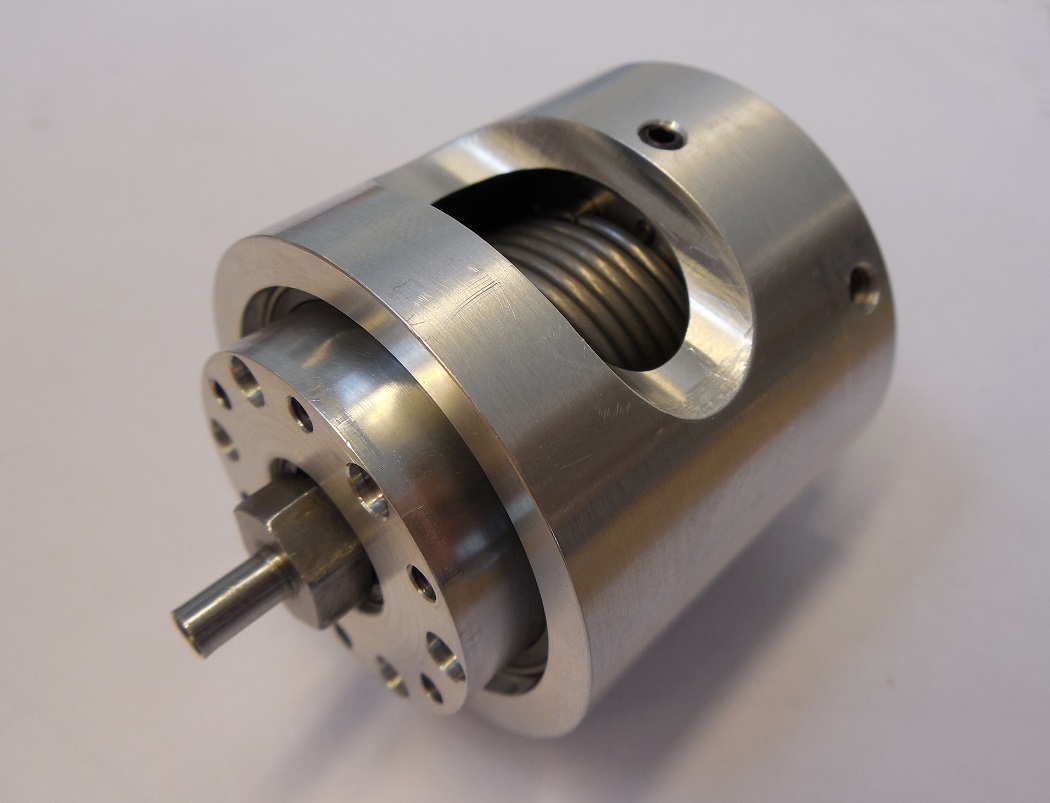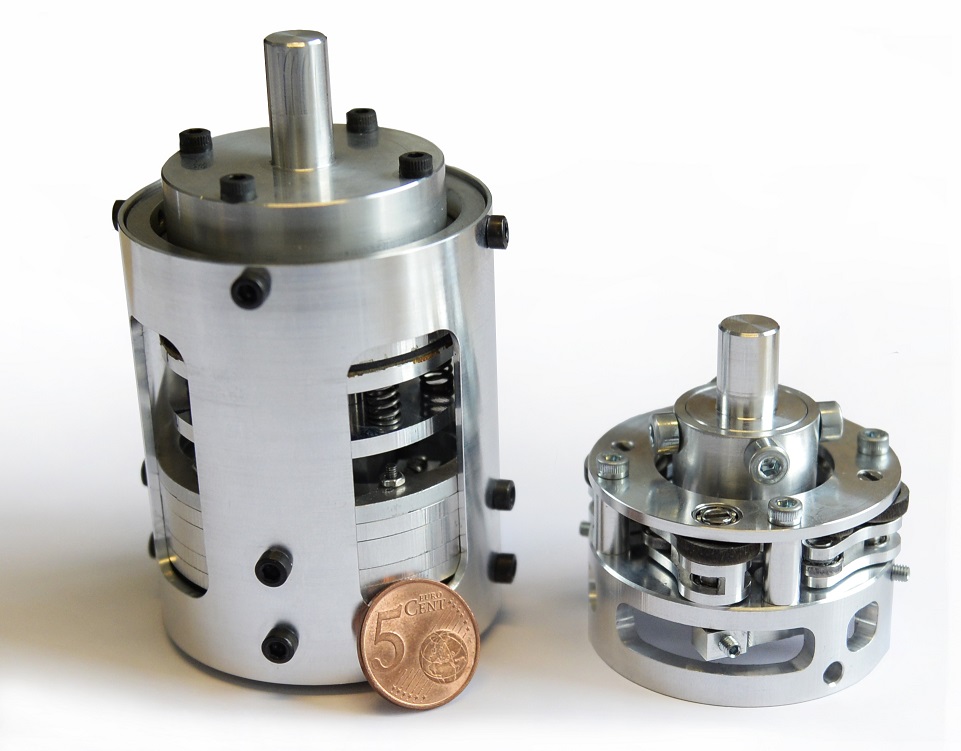Low energy consuming robots
Our goal is to design robots that consume little or no energy. Our main approach is to use Clutched Parallel Elastic Actuation (CPEA). Below, you find information about our CPEA concept and a clutch we developed.
The Bi-directional Clutched Parallel Elastic Actuator
In Parallel Elastic Actuation (PEA), a spring is placed in parallel with the motor, meaning that the torque on the joint is shared by the spring and the motor. The main problem with conventional PEA is that it does not allow to freely choose at which instant or configuration to store or release energy. Therefore, we developed the Bi-directional Clutched Parallel Elastic Actuator (BIC-PEA), which reduces the energy consumption of robots by loading and unloading the parallel spring in a controlled manner. The concept of the BIC-PEA consists of a spring that is mounted between the two outgoing axes of a differential mechanism. Those axes can also be locked to the ground by two locking mechanisms. At any position, the BIC-PEA can store the kinetic energy of a joint in the spring such that the joint is decelerated to zero velocity. The spring energy can then be released, accelerating the joint in any desired direction. Such functionality is suitable for robots that perform rest-to-rest motions, such as pick-and-place robots. In hardware experiments, we reached reductions up to 65%, which is larger than other concepts with the same functionality.

A video with an explanation of the working principle of the BIC-PEA can be found below:
The Bi-directional Clutched Parallel Elastic Actuator (BIC-PEA)
Publications
- Michiel Plooij, Martijn Wisse, Heike Vallery
Reducing the Energy Consumption of Robots Using the Bidirectional Clutched Parallel Elastic Actuator
Transactions on Robotics, 32(6), 2016.
[DOI] [PDF] - Michiel Plooij, Marvin van Nunspeet, Martijn Wisse and Heike Vallery
Design and evaluation of the Bi-directional Clutched Parallel Elastic Actuator (BIC-PEA)
International Conference on Robotics and Automation (ICRA) 2015
[DOI] [PDF] - Michiel Plooij, Wouter Wolfslag, Martijn Wisse
Clutched Elastic Actuators
IEEE/ASME Transactions on Mechatronics, 22 (2), 2017
[DOI]
Statically Balanced Brakes
Crucial in the working principle of CPEAs are the locking mechanisms. Ideally, these locking mechanisms are friction based, because friction based locking mechanisms have an infinite amount of locking positions. Conventional friction based locking mechanisms require a powerful actuator, leading to large, heavy and in most cases energy consuming brakes. We developed a fundamentally different locking concept called statically balanced brakes (SBBs). SBBs do not require any actuation force to maintain a braking torque and only have to move a small mass to vary that torque. Therefore, their energy consumption is potentially very low. In an SBB, one of the two friction surfaces is connected through springs to a braking block. This braking block is connected through a mechanism to a second set of springs, the other side of which connects to the ground. The total energy in the two sets of springs is constant, which results in a zero-force characteristic at the braking block. The position of this statically balanced braking block determines the displacement of the first set of springs and thus the normal force between the friction surfaces. Results show that the actuation force can be reduced by approximately 95-97% in comparison to regular friction based locking mechanisms.

Publications
- M.C. Plooij, T. van der Hoeven, A.G. Dunning and M. Wisse
Statically Balanced Brakes
Precision Engineering, Vol 43, January 2016
[DOI] [PDF] - Michiel Plooij, Glenn Matthijssen, Pierre Cherelle, Dirk Lefeber and Bram Vanderborght
Lock Your Robot: A Review of Locking Devices in Robotics
IEEE Robotics and Automation Magazine vol.22, no.1, March 2015
[DOI] [PDF]